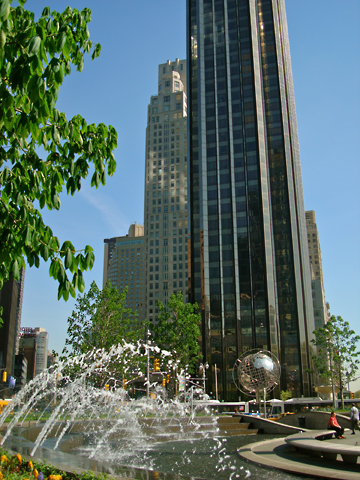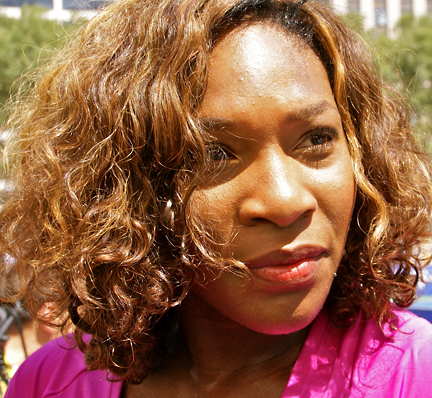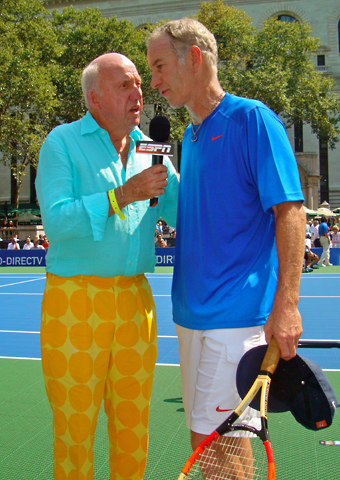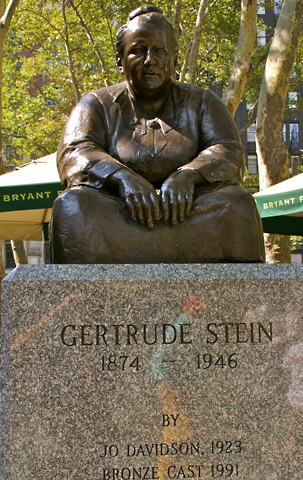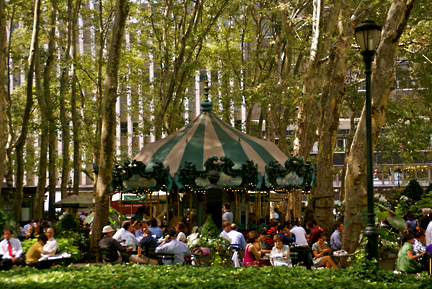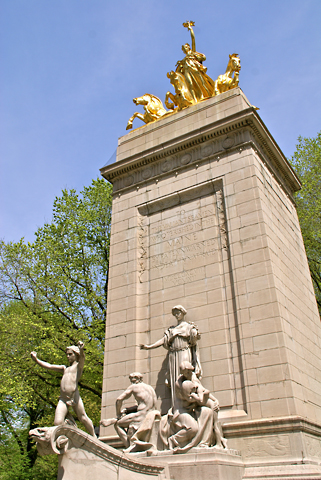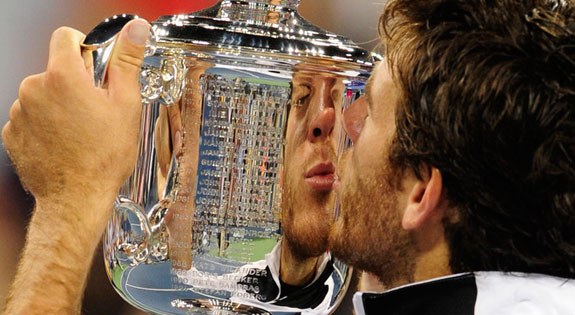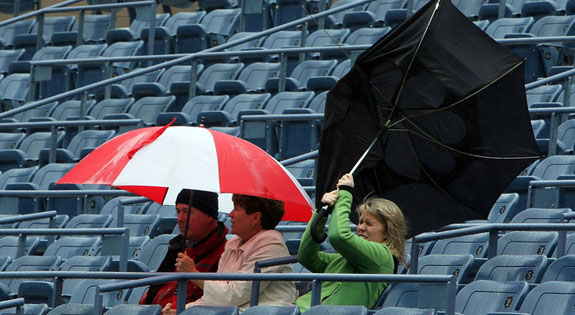By Randy Walker
In my days at the U.S. Tennis Association, I remember reading articles about the U.S. Open’s move from the historic West Side Tennis Club at Forest Hills to the USTA National Tennis Center in Flushing, N.Y. and how people were lamenting about the “loss to tradition.”
W.E. “Slew” Hester, the President of the U.S. Tennis Association who spearheaded the move from Forest Hills to Flushing, said in response, “You want tradition, we’ll plant some ivy.”
The French Open is finding itself in a very similar situation as the French Tennis Federation negotiates and considers moving out of its current Roland Garros site and building a larger, more comfortable site outside of the Paris city limits. The dilemma is simple – do you sacrifice tradition and history for more comfort and additional revenue? Roger Federer, commentating on the situation prior to the start of this year’s tournament, asked “What about the soul of Roland Garros? This is what we might miss after.”
The U.S. Open’s USTA National Tennis Center – now called the Billie Jean King National Tennis Center – is filled with new traditions and memories. During the first year the US Open was played in Flushing Meadows in 1978, Hester had a sprig of potted ivy at the facility’s entrance with a handwritten sign underneath it proclaiming “Watch Tradition Grow!” To boot, the U.S. Open now produces the largest economic impact than any annual international sporting event in the world.
Jean Gachassin, the President of the French Tennis Federation, could learn a lot from Hester and the USTA when they were forced to make the monumental decision of leaving the historic and traditional West Side Tennis Club at Forest Hills and move to a new, anesthetic USTA National Tennis Center in Flushing, a site that used to be a marshy trash dump.
Roland Garros is currently played on a site which less than half the size of the All England Club at Wimbledon and Melbourne Park in Australia (approximately 50 acres each.) The Billie Jean King USTA National Tennis Center sits on 34.5 acres. Players and fans have long complained at the lack of space at Roland Garros, which sits on 19.8 acres. Federer, also the ATP World Tour Player Council President, recently delivered the French Tennis Federation with a long list of players’ complaints about the overcrowding. The world’s No. 1 doubles team of Mike and Bob Bryan recently cited the “meat market” on their Twitter page about the lack of space in the player’s lounge.
The French Tennis Federation’s first choice is to stay within Roland Garros, but build two new stadiums costing around €200 million. The other options would be the town of Marne-le-Vallée, the site of the Euro Disney resort, a 148-acre site in Versailles, or a 74-acre site in Ysern. The new French Open site would feature 55 clay courts, including two big outdoor courts with retractable roofs holding 18,000 and 12,000 spectators. Moving the tournament to Versailles, in a way, might bring in some new found tradition and history as the famed palace of King Louis and Marie Antoinette would become a scenic neighbor. The palace also is the site of perhaps the most important event to ever happen on a tennis court – the famous “Tennis Court Oath” where the meeting of infant French National Assembly pledged on June 17, 1789, to “never to cry to the King, and to meet quietly when the circumstances demand, until the constitution of France is happily singing.” It was a hallmark event in the creation of democracy around the world.
“Moving is an option we cannot rule out,” said Gachassin. “Of course we are very attached to the (current) stadium. Some of the greatest pages of our sport’s history have been written on these courts. This stadium has a past, a soul. But as this is an extremely complex project; it is our duty to consider another direction, which would be the relocation of the Roland Garros stadium.”
The French Open has been played at the current site since 1928. Again, a repeating theme here, but demand necessitated the creation of the current Roland Garros venue as the French Tennis Federation had to build a stadium suitable to fulfill the demand for tickets for the French Davis Cup team – comprising of the famed four Musketeers of Rene Lacoste, Henri Cochet, Jean Borotra and Jacques Brugnon – and their Challenge Round match against Bill Tilden and the U.S. Davis Cup team.
The stadium was named “Roland Garros” – to honor the memory of the famous French aviator and fighter pilot who was killed in World War I. The French have, in essence, rebranded the name “Roland Garros” from the name of the facility to the name of the event. That begs the question that if “Roland Garros” left “Roland Garros” would it still be “Roland Garros?” The U.S. Open had a similar issue as the tournament became simply known as “Forest Hills” rather than the U.S. Nationals or the U.S. Open. It took some time before people stopped calling the event Forest Hills and it became known simply as “the Open.”
Many people forget, or don’t know, that Wimbledon faced the same dilemma starting in 1919 with the emergence of an immensely popular champion, ironically being Suzanne Lenglen, the woman whose name graces the second-biggest stadium at the Roland Garros grounds. Back in those days, Wimbledon was played on the grass courts at Worple Road in Wimbledon Village since the tournament’s inception in 1877. However, more and more fans came to watch The Championships – and in particular Lenglen – so the tournament had to be moved to a different location just down the road and the current Wimbledon site debuted in 1922
Of course, the story of Tennis Australia moving from the private, cramped Kooyong Lawn Tennis Club to the ultra-modern Flinders Park (now Melbourne Park) in 1988 is well-documented and fresh in people’s minds. The first site of the U.S. Championships – the Newport Casino in Newport, R.I. – now the site of the International Tennis Hall of Fame – also became too small and cramped for the U.S. Championships and the event moved to New York in 1915.
Said French Open tournament director Gilbert Ysern: “Roland Garros cannot stay the way it is. We have two options, make it bigger or move out. Over the last 10 years, the three other grand slam tournaments have progressed, notably in terms of infrastructure, but we haven’t.”
Stay tuned to see if tradition will continue or whether we will watch it grow.
Randy Walker is a communications and marketing specialist, writer, tennis historian and the managing partner of New Chapter Media – www.NewChapterMedia.com. He was a 12-year veteran of the U.S. Tennis Association’s marketing and communications division where he was worked as the press officer for 22 U.S. Davis Cup ties, three Olympic tennis teams and was an integral part of USTA media services team for 14 US Opens. He is the author of the book ON THIS DAY IN TENNIS HISTORY.

